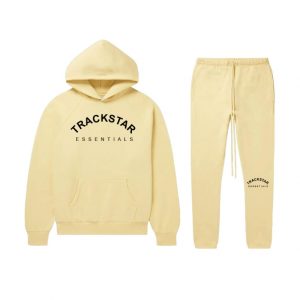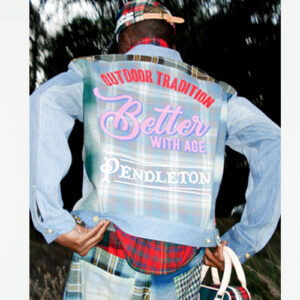As temperatures drop, it becomes essential for pet owners to ensure their furry companions remain warm and comfortable during winter. Just like humans, dogs can feel the cold—especially small breeds, older dogs, and those with short hair. That’s where dog clothes for winter come into play. These garments do more than make your pet look adorable—they provide protection, comfort, and even health benefits.
In this comprehensive guide, we’ll explore the importance of winter clothing for dogs, types of winter garments, how to choose the right ones, and tips for introducing your dog to winter wear.
Why Dogs Need Winter Clothes
Some dog breeds are naturally equipped to handle cold weather due to their thick double coats. Breeds like Siberian Huskies, Saint Bernards, and Newfoundlands thrive in snowy climates. However, many dogs—especially toy breeds (like Chihuahuas), greyhounds, and other short-haired dogs—struggle to maintain body warmth when the temperature dips.
Here are a few reasons why winter clothes for dogs are necessary:
-
Temperature Regulation: Dogs that aren’t bred for cold climates lack the fur insulation needed to regulate body temperature. Clothes help keep them warm during outdoor walks.
-
Health Protection: Exposure to cold weather can lead to hypothermia, frostbite, and arthritis flare-ups. Proper winter attire helps mitigate these risks.
-
Comfort During Walks: A comfortable and warm dog is more likely to enjoy exercise, even in cold months.
-
Indoor Warmth: Older dogs with joint pain often benefit from added warmth even indoors.
Types of Winter Dog Clothes
When browsing for dog clothes for winter, pet owners will find various garments tailored to different needs and weather conditions. Here are some of the most common types:
1. Dog Sweaters
Made of wool, fleece, or cotton blends, dog sweaters are ideal for moderately cold weather. They provide warmth without restricting movement and are great for indoor and short outdoor use.
2. Dog Coats and Jackets
For harsher conditions, waterproof or insulated coats offer superior warmth and protection. Some include hoods, reflective patches, and Velcro closures for comfort and convenience.
3. Thermal Onesies or Pajamas
Ideal for night-time or cold indoor environments, thermal onesies cover the dog’s entire body (except paws and tail). These are especially useful for older pets or sick dogs needing constant warmth.
4. Booties or Paw Protectors
Cold ground, salt, and snow can damage your dog’s paws. Winter booties protect from frostbite, cuts, and chemicals while providing traction on slippery surfaces.
5. Scarves and Snoods
Though more stylish than practical, scarves and snoods (knitted neck and ear warmers) offer additional warmth and flair for smaller dogs in milder conditions.
How to Choose the Right Winter Clothes for Your Dog
Not all winter dog clothes are created equal. Selecting the right outfit involves understanding your pet’s needs and preferences. Here are some factors to consider:
1. Fit and Comfort
Ensure the clothes fit snugly without being too tight. A proper fit will allow your dog to walk, sit, and relieve themselves comfortably. Measure your dog’s neck, chest, and back length for accuracy.
2. Material
Choose breathable, warm, and skin-friendly materials. Fleece and wool are excellent insulators, while cotton blends are good for indoor warmth. For wet weather, waterproof fabrics are a must.
3. Ease of Use
Look for clothes with easy-on, easy-off designs. Velcro or zipper closures are convenient, especially for dogs that don’t like being dressed.
4. Safety Features
For nighttime walks, clothes with reflective strips or bright colors help with visibility. Avoid buttons or embellishments that can be chewed or swallowed.
5. Maintenance
Dogs get dirty, so machine-washable clothing saves time and effort. Make sure to follow care instructions to maintain fabric quality.
Introducing Your Dog to Winter Clothes
Dogs not accustomed to wearing clothes may resist initially. Here’s how to make the transition easier:
-
Start Slowly: Let your dog sniff and inspect the clothing before putting it on.
-
Use Positive Reinforcement: Reward with treats and praise after each successful try.
-
Begin Indoors: Start with short sessions indoors to let your dog get used to the sensation.
-
Watch for Discomfort: If your dog is overly stressed or trying to remove the clothing, take a break and try again later.
Winter Safety Tips Beyond Clothing
While dog clothes for winter are essential, it’s also important to ensure your dog stays healthy in other ways during the cold season:
-
Limit Time Outdoors: Even with warm clothes, avoid prolonged exposure in freezing temperatures.
-
Keep Paws Clean: Rinse your dog’s paws after walks to remove salt, ice, and chemicals.
-
Adjust Diet: Some dogs may need more calories to stay warm, while less active dogs may need fewer.
-
Stay Dry: Wet clothes can chill your dog. Always change into dry clothing after walks in rain or snow.
Conclusion
Dog clothes for winter are more than a fashion statement—they are a functional, protective necessity for many dogs. From cozy sweaters to durable jackets and protective booties, there’s a wide range of options to ensure your dog stays warm, comfortable, and safe during winter.
Whether you live in a snowy area or simply experience mild winter chills, taking the time to dress your dog properly can make a world of difference in their health and happiness. Invest in the right clothing, introduce it patiently, and your pet will thank you with wagging tails and joyful energy all season long.



